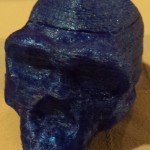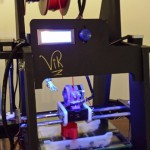 Here’s our batch of brand new Mirobot v3 kits on their arrival in Australia, dozens stacked. Since the v3 have a neat acrylic frame, I think I’ll do a proper “unboxing” and first build video of one soon, so you can see for yourself what this is about.
Here’s our batch of brand new Mirobot v3 kits on their arrival in Australia, dozens stacked. Since the v3 have a neat acrylic frame, I think I’ll do a proper “unboxing” and first build video of one soon, so you can see for yourself what this is about.
Many classes of year 5 and 6 students around Brisbane and their teachers have done our Robotics Workshops in recent years (using the Mirobot v1 and v2), and others have purchased their own Mirobot to build and use at home. And schools around Australia order sets to run their own programs.
What’s special about the v3 is that it’s now possible to repeatedly build and (carefully) disassemble the Mirobots, which means that not only the programming but also the assembly process can be repeated for future cohorts.
Below is an animation of the v3 kit build process:
The Mirobot is a “logo” turtle: it takes a pen (up&down) and can move forward/reverse (in mm) and turn left/right (in degrees). So, Mirobot can draw, and that’s really important because it provides students with very direct feedback for their programming. There are also bump and line-following sensors.
Students engage with inquiry-based learning: first the build which involves learning about the components and the mechanical structure – then, programming from a “simple” square, to a house, circle, stars and much more complex patterns. Students also make them write letters. Sure!
Most of the current batch was already pre-ordered, but we have some regular stock.

 Open source has opened up huge opportunities for archaeologists. As well as high quality tools for research, we can use open source to engage kids with the past. Addressing the new National Curriculum, we use 3D printed fossil skulls and replicas of archaeological material to give kids a hands-on experience, making the past Funky and Fun!
Open source has opened up huge opportunities for archaeologists. As well as high quality tools for research, we can use open source to engage kids with the past. Addressing the new National Curriculum, we use 3D printed fossil skulls and replicas of archaeological material to give kids a hands-on experience, making the past Funky and Fun! Archaeologists are usually very good at sharing knowledge with each other and the wider world. Under Creative Commons licences many files are made available, including scans of fossil skulls, artefacts and other archaeological material. Using a suite of open source tools, including a 3D printer, a series of interactive experiences for school children has been developed allowing them hands-on involvement with this material.
Archaeologists are usually very good at sharing knowledge with each other and the wider world. Under Creative Commons licences many files are made available, including scans of fossil skulls, artefacts and other archaeological material. Using a suite of open source tools, including a 3D printer, a series of interactive experiences for school children has been developed allowing them hands-on involvement with this material.
The material is much more interesting. When I discussed a topic later in the term, I found that the students…
Laura Davidson, Teacher